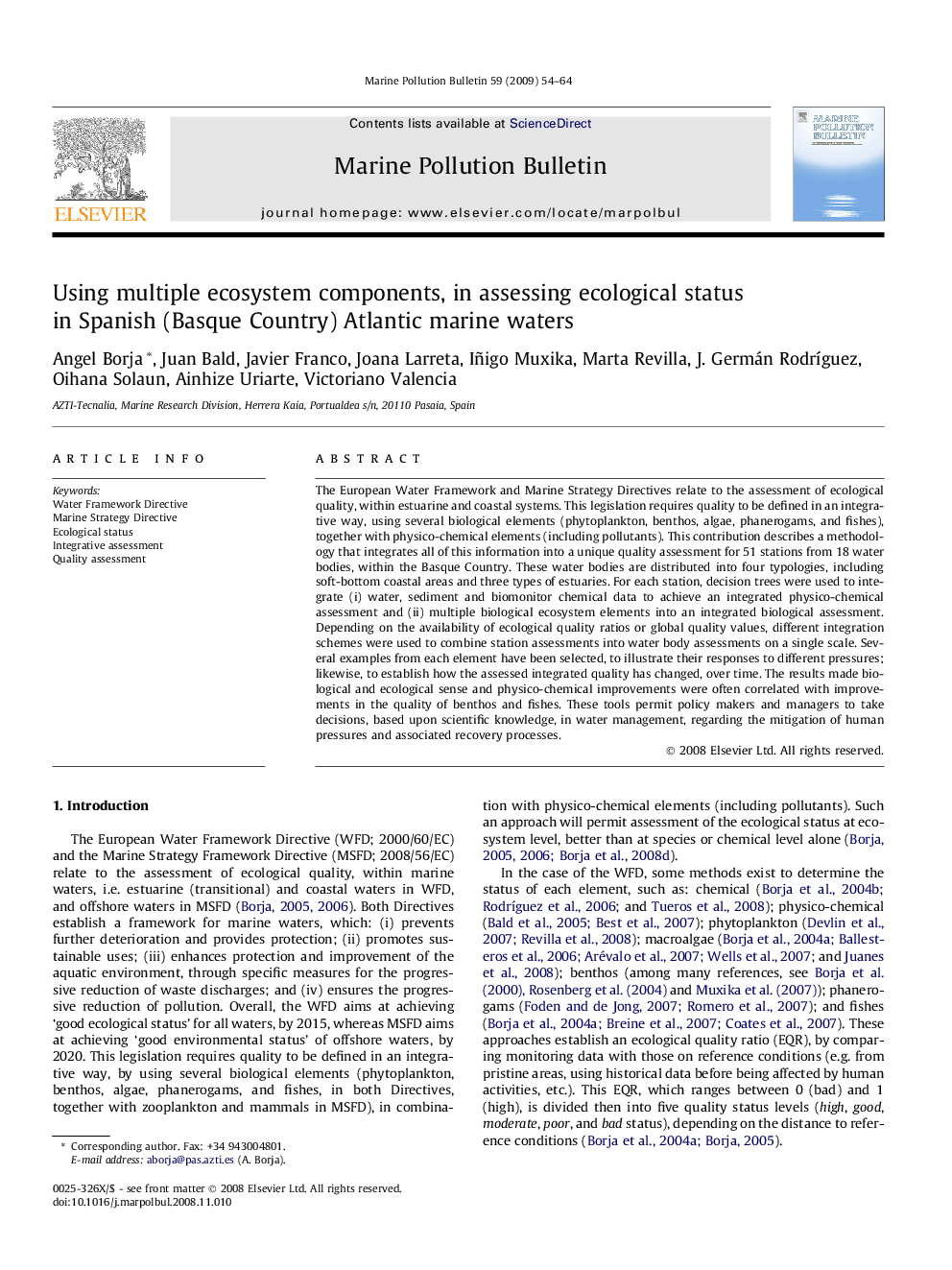| Article ID | Journal | Published Year | Pages | File Type |
|---|---|---|---|---|
| 4476865 | Marine Pollution Bulletin | 2009 | 11 Pages |
The European Water Framework and Marine Strategy Directives relate to the assessment of ecological quality, within estuarine and coastal systems. This legislation requires quality to be defined in an integrative way, using several biological elements (phytoplankton, benthos, algae, phanerogams, and fishes), together with physico-chemical elements (including pollutants). This contribution describes a methodology that integrates all of this information into a unique quality assessment for 51 stations from 18 water bodies, within the Basque Country. These water bodies are distributed into four typologies, including soft-bottom coastal areas and three types of estuaries. For each station, decision trees were used to integrate (i) water, sediment and biomonitor chemical data to achieve an integrated physico-chemical assessment and (ii) multiple biological ecosystem elements into an integrated biological assessment. Depending on the availability of ecological quality ratios or global quality values, different integration schemes were used to combine station assessments into water body assessments on a single scale. Several examples from each element have been selected, to illustrate their responses to different pressures; likewise, to establish how the assessed integrated quality has changed, over time. The results made biological and ecological sense and physico-chemical improvements were often correlated with improvements in the quality of benthos and fishes. These tools permit policy makers and managers to take decisions, based upon scientific knowledge, in water management, regarding the mitigation of human pressures and associated recovery processes.
